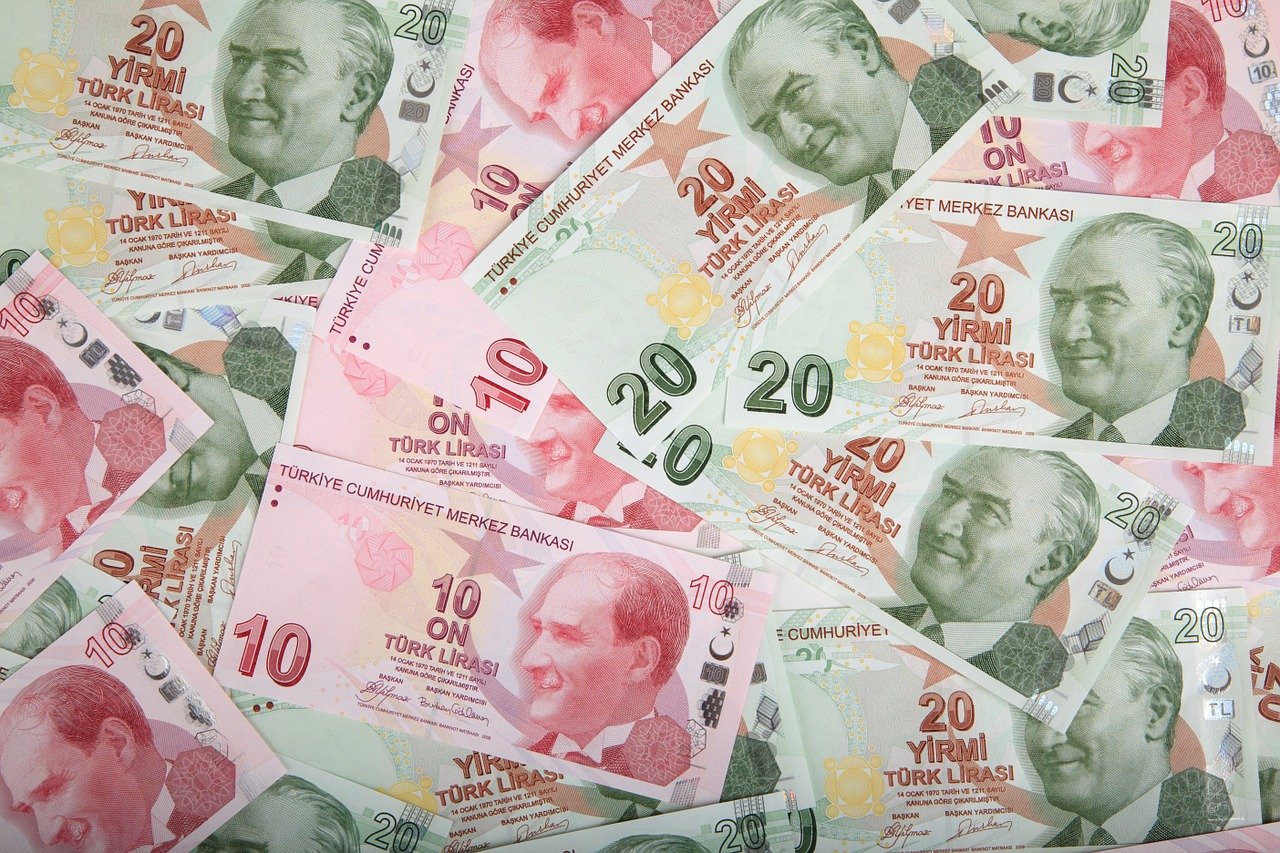
Credit | Emerging Markets | Europe | Fiscal Policy | FX | Monetary Policy & Inflation

Credit | Emerging Markets | Europe | Fiscal Policy | FX | Monetary Policy & Inflation
At $27.5bn, Turkey’s C/A deficit is not actually that large on a 12-month rolling basis. Two years ago, it was running at more than $50bn. But what is remarkable is both the speed of deterioration and the disconnect between C/A improvements elsewhere in EM (Chart 1). India’s C/A has flipped to a rare surplus; Brazil has improved substantially; and even Argentina with its much narrower, and less currency-sensitive export base, has climbed into the black.
Yet the lira has peers in its dismal performance YTD. ARS is the worst-performing EM currency YTD, down 30% versus the USD, and both TRY and BRL have lost around 28%. RUB is fairly close behind at 23%. But it is not that Turkey has failed to benefit from any competitiveness boost from a weaker currency. Export performance has been no worse than elsewhere, with the average decline of -22% YoY in Q2 better than India’s -36.4%. And recent months have seen growth turn positive. A sharp decline in tourism receipts has hit the services balance, with the 12-month surplus at $16.4bn versus $36.3bn a year ago. But again, this is not confined to Turkey with tourism receipts collapsing globally.
This article is only available to Macro Hive subscribers. Sign-up to receive world-class macro analysis with a daily curated newsletter, podcast, original content from award-winning researchers, cross market strategy, equity insights, trade ideas, crypto flow frameworks, academic paper summaries, explanation and analysis of market-moving events, community investor chat room, and more.
Turkey’s balance of payments problems are far from new. Its top economic officials are. But does that mean enough has changed to underpin a sustained turnaround in the lira? We are not yet convinced.
At $27.5bn, Turkey’s C/A deficit is not actually that large on a 12-month rolling basis. Two years ago, it was running at more than $50bn. But what is remarkable is both the speed of deterioration and the disconnect between C/A improvements elsewhere in EM (Chart 1). India’s C/A has flipped to a rare surplus; Brazil has improved substantially; and even Argentina with its much narrower, and less currency-sensitive export base, has climbed into the black.
Yet the lira has peers in its dismal performance YTD. ARS is the worst-performing EM currency YTD, down 30% versus the USD, and both TRY and BRL have lost around 28%. RUB is fairly close behind at 23%. But it is not that Turkey has failed to benefit from any competitiveness boost from a weaker currency. Export performance has been no worse than elsewhere, with the average decline of -22% YoY in Q2 better than India’s -36.4%. And recent months have seen growth turn positive. A sharp decline in tourism receipts has hit the services balance, with the 12-month surplus at $16.4bn versus $36.3bn a year ago. But again, this is not confined to Turkey with tourism receipts collapsing globally.
Instead, the main divergence is imports. Turkey’s credit-focused policy mix has fuelled import growth, leaving the country battling a sharply wider trade deficit alongside a shrinking services surplus. Through August and September, Turkish import growth was still running above +20% YoY, versus an average of -20% YoY for Brazil, Argentina, South Africa and India (Chart 2).
Private sector credit growth is also exceptionally high, even with FX-denominated credit contracting. Our measure of the FX-adjusted credit impulse (the change in the flow of credit) is running at close to 15% of GDP through September (Chart 3). And FX-adjusted credit growth is running at around 40% YoY. But weekly credit data points to a turnaround. Versus the peak of around 90% YoY (annualized) earlier in the year, lira-denominated lending has now eased back close to 15% as higher funding costs discourage borrowing.
The pullback in credit extension should start to show up in imports and the headline C/A deficit in the coming months. Reduced external financing needs should therefore reduce pressure on the lira and potentially allow for some reserves build-up. But whether it is sustained remains entirely contingent on President Erdogan’s perceived tradeoff between slower economic growth and a more stable currency.
The lira has been cheap for at least the last three years – and at an extreme level for much of the past two. It is the most undervalued currency in EM according to our metrics, with Brazil and RUB next. But as Turkey’s past two currency blow-ups have reminded us, valuation is not a barrier to further weakness.
With Erdogan repeating his assertion that high interest rates are inflationary earlier this month, it is difficult to have confidence in a sustained lira turnaround. The macro outlook has undoubtedly improved in recent weeks, but TRY stability could be short-lived if the central bank once again comes under pressure to lower rates.
We await more concrete signs of change in Turkey before turning bullish. This week’s announcements of the removal of the asset ratio rule and of the link between reserve requirement ratios and renumeration with loan growth are both important positives. As is the unwinding of limits on FX swaps and derivatives. But it could mean more lira weakness ahead.
In addition, we need to see three more things. One, a decisive turnaround in the credit impulse (which should ensure domestic demand returns to a firmer footing). Two, a sequential easing in import growth. And three, stabilization in inflation expectations. This would help to reverse the steady decline in ex-ante real rates seen since June.
Spring sale - Prime Membership only £3 for 3 months! Get trade ideas and macro insights now
Your subscription has been successfully canceled.
Discount Applied - Your subscription has now updated with Coupon and from next payment Discount will be applied.